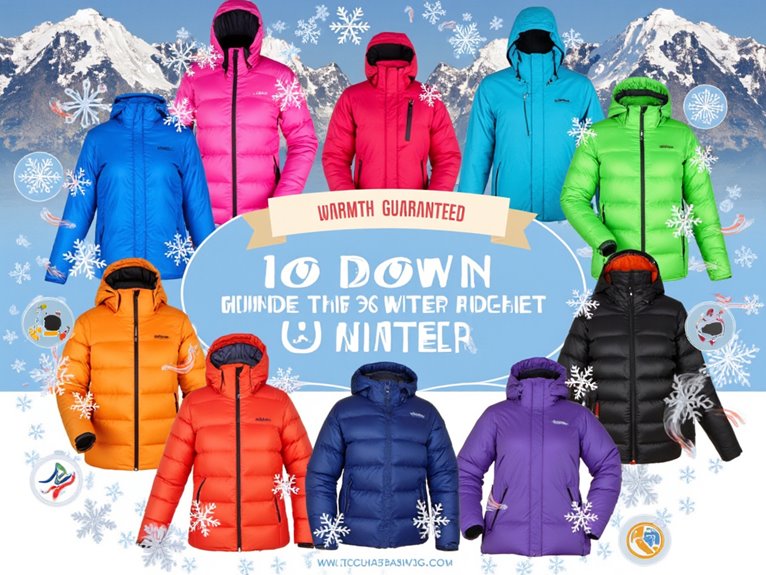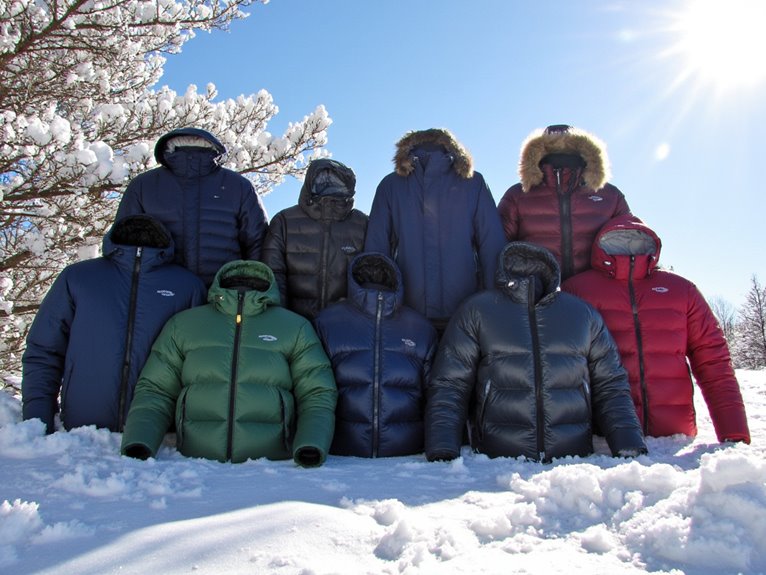How Long Do Mountaineering Boots Last?
The lifespan of mountaineering boots depends on a combination of factors, including the quality of construction, usage, and maintenance. Well-maintained boots can last anywhere from 5 to 10 years or more. Frequent use in rugged terrain and harsh weather conditions can reduce boot lifespan, while neglecting maintenance can lead to premature wear. Proper storage, cleaning, and conditioning are essential to extend boot lifespan. Understanding these factors is vital for maximizing boot lifespan and ensuring peak performance. By grasping these key elements, you can unlock the full potential of your mountaineering boots and ensure they serve you well on your next adventure.
We are supported by our audience. When you purchase through links on our site, we may earn an affiliate commission, at no extra cost for you. Learn more. Last update on 1st January 2026 / Images from Amazon Product Advertising API.
Factors Affecting Boot Lifespan
The lifespan of mountaineering boots is substantially influenced by a combination of factors, including usage frequency, environmental conditions, and maintenance quality.
Frequent use in rugged terrain and harsh weather conditions can markedly reduce the lifespan of boots. Exposure to water, snow, and extreme temperatures can cause materials to degrade, leading to cracks, tears, and other forms of damage.
Proper storage, cleaning, and conditioning are essential to extend the life of mountaineering boots. Neglecting maintenance can lead to premature wear, reducing the overall lifespan of the boots.
Understanding these factors is vital in maximizing the lifespan of mountaineering boots and ensuring peak performance on the mountain.
Quality of Construction Matters
High-quality construction is a critical factor in determining the overall performance and lifespan of mountaineering boots, as it directly impacts their ability to withstand the rigors of rugged terrain and harsh environmental conditions.
Boots built with premium materials, such as full-grain leather, and constructed with attention to detail can withstand the elements and heavy use.
A sturdy sole, robust stitching, and waterproof membranes are essential components of a well-constructed boot.
Look for boots with reinforced high-wear areas, such as the toe and heel, to guarantee durability.
Usage and Maintenance Routine
Proper care and maintenance are crucial to extending the life of mountaineering boots, and a well-planned usage and maintenance routine can greatly impact their overall performance.
A regular inspection of the boots is essential to identify any signs of wear and tear.
Check for loose threads, cracks, and worn-out soles, and address these issues promptly.
Rotate your boots to guarantee even wear and prevent uneven stress on the materials.
Avoid extreme temperatures and humidity, as these can cause damage to the materials.
Storage and Cleaning Techniques
When not in use, mountaineering boots require careful storage to maintain their quality and extend their lifespan.
Implementing proper storage methods, such as keeping them in a cool, dry place away from direct sunlight, is essential.
Additionally, establishing a daily cleaning routine can help prevent dirt and debris buildup, ensuring peak performance and comfort on the mountain.
Proper Storage Methods
Your mountaineering boots require careful storage to maintain their performance and extend their lifespan, and a well-organized storage space is essential for this purpose.
Proper storage methods involve keeping the boots away from direct sunlight, moisture, and extreme temperatures. Store them in a cool, dry place, such as a closet or storage room, to prevent damage from heat or humidity.
Use a breathable storage bag or wrap the boots in a cloth to maintain airflow and prevent moisture buildup. Avoid stacking the boots on top of each other, as this can cause creases and damage to the materials.
Daily Cleaning Routines
Daily cleaning routines are essential to maintaining the performance and longevity of your mountaineering boots, as dirt and debris can erode the materials and compromise the boot's waterproofing and insulation.
After each use, remove any loose dirt and debris with a soft-bristled brush.
Next, use a mild soap and lukewarm water to gently scrub away stubborn stains.
Avoid harsh chemicals or abrasive materials that can damage the materials.
Allow the boots to air dry, away from direct sunlight and heat.
Regular cleaning will prevent the buildup of dirt and grime, ensuring your boots remain in prime condition.
Average Lifespan of Boots
The average lifespan of mountaineering boots is influenced by a combination of factors, including the quality of the boots, the materials and craftsmanship used in their construction, and the level of usage and maintenance they receive.
Boots that are well-made with high-quality materials can last for many years with proper care, while lower-quality boots may have a noticeably shorter lifespan.
Understanding the interplay between these factors is essential for maximizing the life of your mountaineering boots.
Boot Quality Matters
On average, a high-quality pair of mountaineering boots can last for around 5 to 7 years, depending on factors such as usage, maintenance, and storage conditions.
However, this lifespan can vary notably depending on the quality of the boots. Cheap, low-quality boots may only last for a single season, while premium boots can last for 10 years or more.
The quality of the materials, construction, and design all play a substantial role in determining the lifespan of the boots.
Investing in high-quality boots may seem expensive upfront, but it can save you money and hassle in the long run. By choosing boots from reputable manufacturers, you can guarantee that your investment will last for many adventures to come.
Materials and Craftsmanship
While a boot's overall construction plays a substantial role in determining its lifespan, the quality and durability of the materials used in its construction are equally essential factors.
High-quality materials, such as full-grain leather, can withstand harsh outdoor conditions and last longer.
On the other hand, lower-quality materials, like synthetic fabrics, may degrade faster.
Additionally, the craftsmanship of the boot also impacts its lifespan.
Well-made boots with secure stitching, robust bonding, and attention to detail can withstand the rigors of mountaineering, while poorly constructed boots may fall apart quickly.
A combination of high-quality materials and excellent craftsmanship can notably extend the lifespan of mountaineering boots.
Usage and Maintenance
Proper care and regular maintenance substantially impact the average lifespan of mountaineering boots, with well-maintained boots potentially lasting for hundreds of climbs.
Regular cleaning, drying, and storage are essential to prevent damage from dirt, water, and UV exposure. Avoid using harsh chemicals or abrasive cleaners, as they can compromise the materials.
Apply waterproofing treatments and condition leather components periodically to maintain their integrity.
Additionally, inspect boots regularly for signs of wear, such as sole delamination, torn seams, or broken eyelets, and address these issues promptly to prevent further damage.
Identifying Signs of Wear
Regular inspection of your mountaineering boots is crucial to identify signs of wear, as overlooked damage can compromise their performance and ultimately your safety.
Look for cracks in the sole, worn-out tread patterns, and tears in the upper material.
Check for loose or broken eyelets, and inspect the lacing system for signs of wear.
Pay attention to the condition of the gusset and tongue, ensuring they remain securely attached.
Finally, examine the boot's waterproofing, checking for signs of delamination or compromised seams.
Extending Boot Life Expectancy
To maximize the lifespan of your mountaineering boots, adopt a proactive maintenance routine that incorporates cleaning, conditioning, and storage best practices. This will help prevent premature wear and tear, allowing your boots to remain in top condition for a longer period.
To prolong the life of your boots:
- Clean your boots regularly: Remove dirt and debris using a soft-bristled brush and mild soap.
- Condition the leather: Apply a leather conditioner to keep the material supple and resistant to cracks.
- Store boots properly: Keep them in a cool, dry place, away from direct sunlight, and avoid stacking them on top of each other.
- Check and replace insoles: Verify the insoles are clean and dry, and replace them if they show signs of wear or damage.
Replacing Parts and Repair
When even the best maintenance efforts can no longer prevent wear and tear, replacing parts and undertaking repairs become necessary to restore your mountaineering boots to their peak performance.
Regular inspection can help identify worn-out components, such as laces, grommets, or crampons, which can be replaced with original equipment manufacturer (OEM) or aftermarket parts.
In-house repair or professional cobbler services can refurbish damaged or broken components, extending the boot's lifespan.
It's essential to address issues promptly to prevent further damage and maintain the boots' reliability and safety.
Caring for Waterproofing Coatings
Every season, mountaineers should inspect and maintain their boots' waterproofing coatings to guarantee top-notch performance and protection against the elements. Regular maintenance ensures the boots remain water-resistant, breathable, and durable.
To care for waterproofing coatings, follow these 4 steps:
Clean the boots: Remove dirt and debris using a soft-bristled brush and mild soap.
Apply a waterproofing treatment: Use a reputable product specifically designed for mountaineering boots.
Inspect and repair: Check for cracks, scratches, or worn-out areas and repair them promptly.
Store boots properly: Keep them in a cool, dry place, away from direct sunlight, to prevent degradation of the waterproofing coating.


